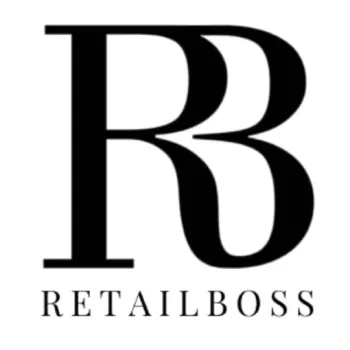Have you ever wondered what makes certain retail brands thrive while others barely survive? The secret lies in their marketing strategy. In this comprehensive guide, we will unlock the secrets of retail marketing and delve deep into its core principles. Whether you are a brand owner, a marketer, or simply curious about the industry, this guide is designed to equip you with valuable insights to conquer the retail world.
- The Four Gold Standards of Retail Marketing
- Taking In-Store Marketing to the Next Level
- Personalize with Geo-Targeted Notifications
- Create Unforgettable In-Store Experiences
- Personalize Recommendations Using Data Analytics
- Bring Products to Life with Augmented Reality
- Harness the Power of Social Media
- Final Thoughts
The journey through the world of retail marketing begins by understanding what it is and why it matters. We’ll then explore the four pillars of retail marketing, known as the 4 P’s: Product, Price, Place, and Promotion. Buckle up and get ready to embark on an exciting learning adventure!
What is Retail Marketing?
Retail marketing is the art and science of selling products directly to consumers. It involves a multitude of strategies and tactics that retailers employ to attract customers and drive sales. In essence, retail marketing revolves around four key components: Product, Price, Place, and Promotion. Each plays a critical role in enticing potential customers, converting them into paying ones, and turning them into loyal fans of the brand.
The Importance of Retail Marketing
Retail marketing is crucial for several reasons. It helps manufacturers get their products into the hands of consumers. It enables businesses to stand out in a crowded market, establish brand identity, and foster customer loyalty. It also facilitates effective price positioning, which directly impacts a company’s profitability. Last but not least, retail marketing drives customer engagement and enhances the overall shopping experience, laying the groundwork for sustainable business growth.
The Four Gold Standards of Retail Marketing
Now that we’ve covered the basics let’s delve deeper into the four gold standards of retail marketing mentioned earlier: Product, Price, Place, and Promotion. These elements form the foundation of any successful retail marketing strategy, and understanding how they interact is key to achieving your business objectives.
Product
The product is arguably the most essential element in retail marketing. It refers to the physical item or service being sold. The product must meet the needs and wants of the target customer and provide value for money. It should also have unique features or qualities that distinguish it from competitors. Remember, no amount of marketing can sell a poor product consistently. Hence, product quality should never be compromised.
Price
Price is another key component of retail marketing. It refers to the amount of money customers are willing to pay for the product or service. Pricing strategy should take into account various factors, such as production costs, market demand, competitor pricing, and customer perceived value. An effective pricing strategy can boost sales, increase market share, and improve profit margins.
Place
Place refers to where the product is sold. It could be a physical store, an online platform, a pop-up shop, or any other distribution channel. The choice of place depends largely on where your target customers shop. It’s crucial to make your product easily accessible to them. Also, the place of sale should offer a pleasant shopping experience, as it significantly influences the customer’s perception of the product and the brand.
Promotion
Promotion encompasses all the activities undertaken to communicate with the customer, create awareness about the product, and persuade them to make a purchase. This includes advertising, public relations, sales promotions, direct marketing, and more. An effective promotion strategy grabs the attention of potential customers, enhances product visibility, and stimulates sales.
Taking In-Store Marketing to the Next Level
With the fundamental principles of retail marketing under our belt, let’s now shift our focus to some innovative strategies that can take your in-store marketing to the next level. In the era of digital transformation, leveraging technology and data analytics can give you a significant competitive edge.
Personalize with Geo-Targeted Notifications
In today’s mobile-centric world, geo-targeted notifications can be a powerful tool for personalizing your in-store marketing. By sending targeted messages to customers based on their location, you can provide them with timely and relevant information about your products, offers, or events. This not only enhances the shopping experience but also boosts customer engagement and conversions.
Create Unforgettable In-Store Experiences
In the age of e-commerce, brick-and-mortar stores need to offer more than just products. They need to provide memorable in-store experiences. This could involve interactive product demos, engaging sales staff, immersive store layouts, or exciting events. Creating unforgettable experiences can turn casual shoppers into loyal customers and brand advocates.
Personalize Recommendations Using Data Analytics
Data analytics can be a game-changer in retail marketing. By analyzing customer data, you can gain valuable insights into their shopping behavior, preferences, and needs. This allows you to personalize product recommendations, tailor your marketing messages, and deliver a highly personalized shopping experience. Personalization not only increases customer satisfaction but also boosts sales and loyalty.
Bring Products to Life with Augmented Reality
Augmented Reality (AR) is one of the latest trends in retail marketing. It allows customers to visualize how a product would look or function in real-life settings before making a purchase. This enhances the shopping experience, reduces uncertainty, and leads to better purchase decisions. Brands across various sectors, from furniture to fashion, are already leveraging AR to revolutionize their in-store marketing.
Harness the Power of Social Media
Social media has become a vital part of retail marketing. It provides a platform for brands to connect with customers, build relationships, and promote their products. It also enables customers to share their shopping experiences, reviews, and recommendations with their network, amplifying your brand’s reach and influence. Therefore, a well-executed social media strategy can significantly boost your in-store marketing efforts.
Final Thoughts
So whether you’re just starting out or looking to takeyour retail marketing to new heights, remember to focus on the product, price, place, and promotion. Embrace technology, personalize your marketing efforts, and always keep the customer at the center of your strategy. With these tools and insights, you’ll be well-equipped to navigate the ever-evolving world of retail marketing and achieve success.
Remember, retail marketing is not just about selling products; it’s about building lasting relationships with customers and creating a brand that resonates with them. So go ahead, unlock the secrets of retail marketing, and watch your business thrive.

















